I wish I could say I had hiked more of the Great Sand Dunes, but the threat of a late afternoon summer monsoon — common in Southern Colorado that time of year — loomed above us and forced us to retreat. Still, the pictures of this otherworldly landscape were just too beautiful not to share.
Not far from Penitente Canyon, Great Sand Dunes National Park and Preserve encompasses over 30 square miles near Alamosa, Colorado, in an arid plain between the San Juan and Sangre de Cristo Ranges. Surrounding the dune fields is a playground of natural habitats, ranging from pinyon pine forests to preserved wetlands.
You can hike, slide, sled, sandboard, or tumble down the granular faces of the dunes, backpack to the alpine tundra of the Sangre de Cristos, or splash and skimboard in Medano Creek.
From a distance, the dunes look like a giant sand box that’s no less spectacular — but relatively dwarfed — against the 13,000-foot-tall peaks of the Sangre de Cristos rising above them. Only as you drive closer does the vastness and grandeur of the dunes really invoke the senses.
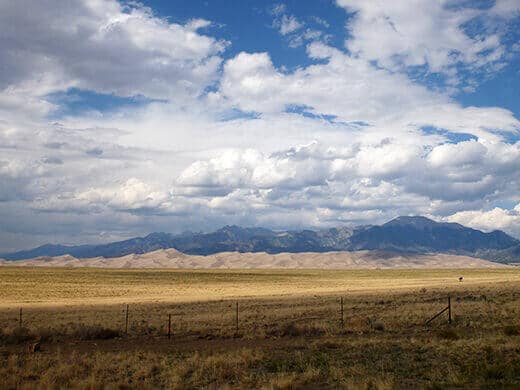
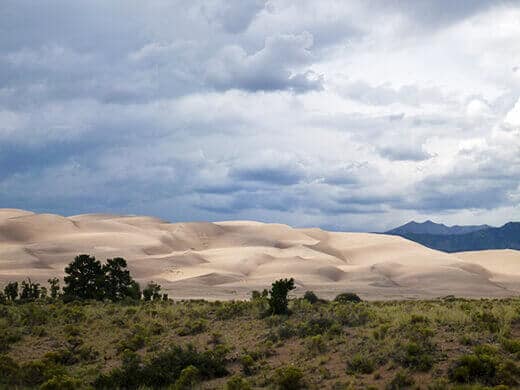
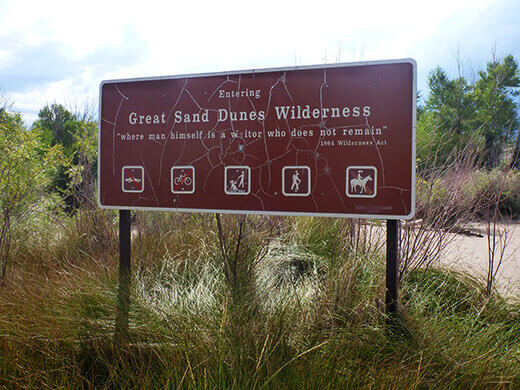
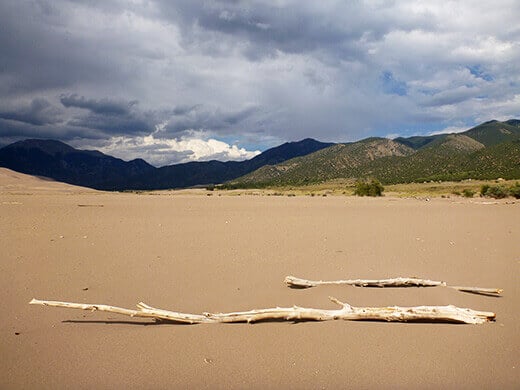
The Great Sand Dunes rise 750 feet above the San Luis Valley, making them the tallest dunes in North America. They started forming around 440,000 years ago and now sprawl across 19,000 acres in the foothills of the Sangre de Cristos. Over millenia, sand and gravel from the Rio Grande and its tributaries flowed out of the San Juan Mountains into the high desert valley. Prevailing southwesterly winds then picked up these sand deposits from flood plains and carried them toward the Sangre de Cristos, piling the particles up against the base of the mountains.
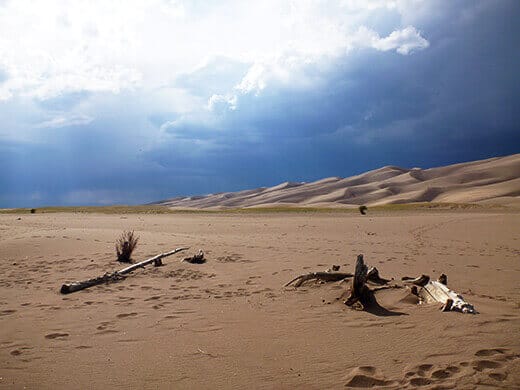
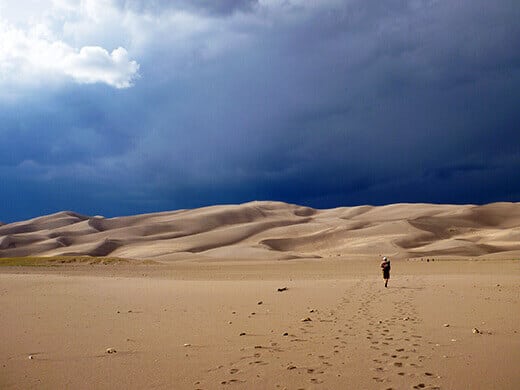
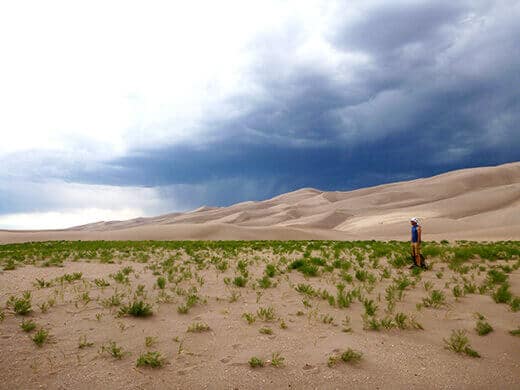
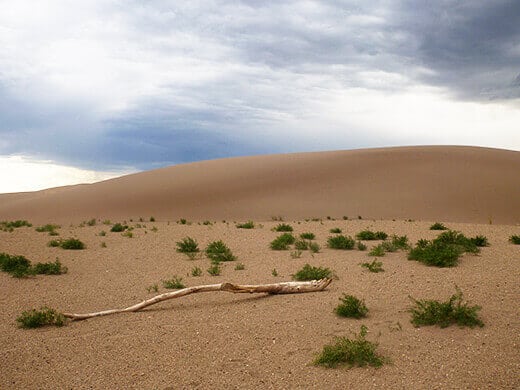
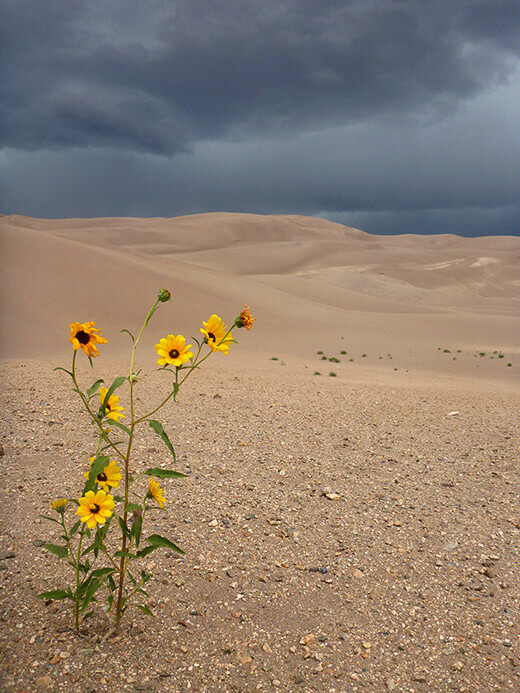
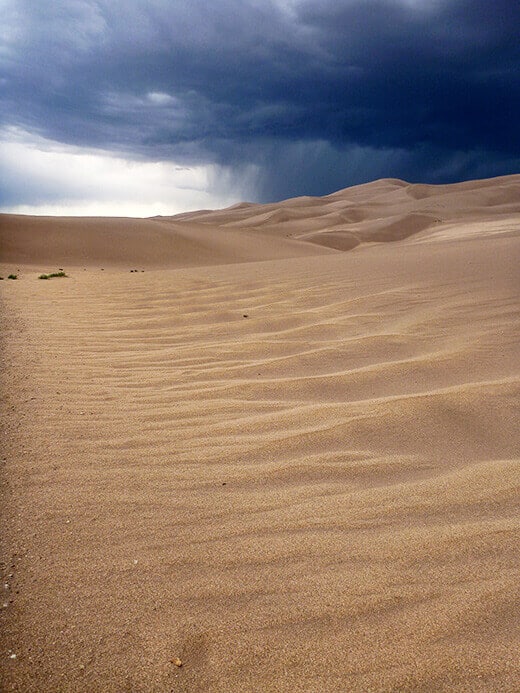
Heavy winds continually reshape the crests of the dunes, and sometimes even migrate smaller dunes by several feet in a week. Despite this, the dune fields show remarkable permanence due to opposing winds in the late summer months that carry sand back toward the southwest. It’s this back and forth movement of windblown particles that piles the sand up vertically and makes the dunes so tall and stable.
Since the dunes exist from wind, there was no shortage of a good windstorm in the valley. With the impending monsoon came powerful gusts of wind that felt like we were being sandblasted by razor sharp specks — not a fun situation to be caught in for long.
We were able to run off the dunes and take cover behind some trees, while handfuls of sand found their way into our shoes, our socks, even our underwear.


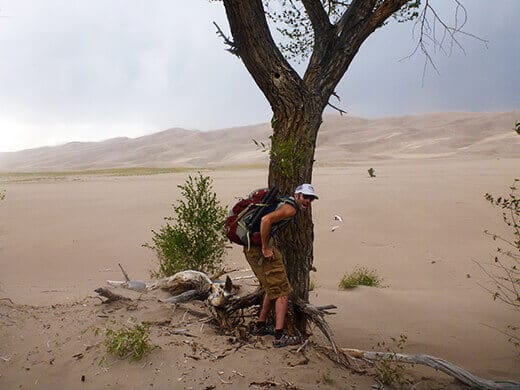
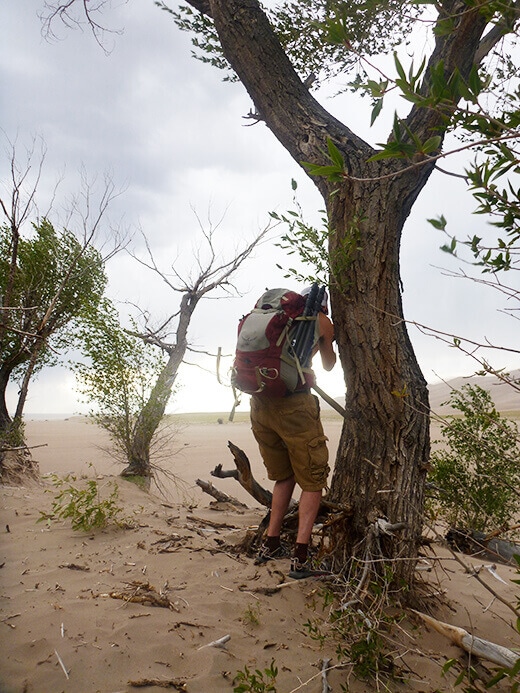
But the monsoon went almost as quickly as it came, and the post-storm glow from a waning sun cast some amazing shadows on the dunes…
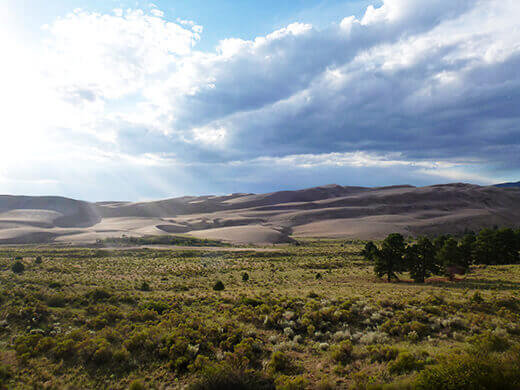


… Just as amazing as this fiery sunset that peeked out from behind lingering storm clouds and mountain peaks.
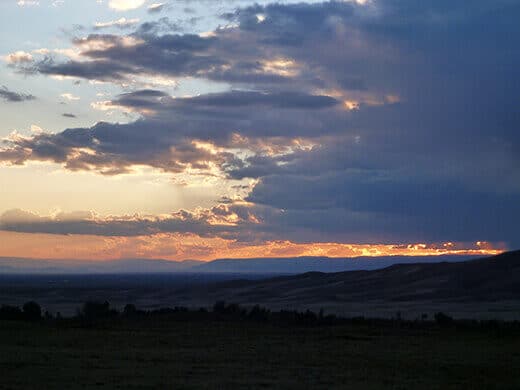


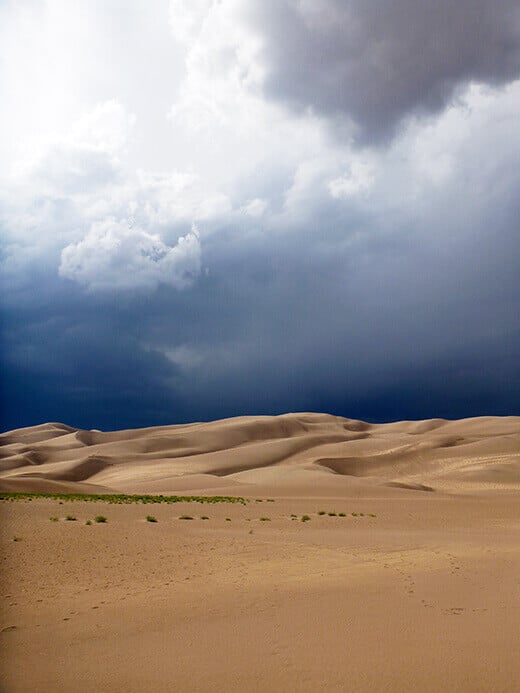













Thanks for sharing this on Twitter today. I live near Colorado Springs and still haven’t gotten a chance to visit the Sand Dunes. Now I have to get out there! Beautiful photos 🙂
Thank you! One day I hope to go back and actually climb to the top of the dunes. 🙂
Beautiful pictures! (Found your blog through Country Living.)
Thank you! And I love meeting Country Living readers. 🙂
My goodness those picture are breathtaking! Thank you for sharing!
Thank you for reading!
Those are all beautiful shots Linda!
Thanks! Hopefully in the near future, I’ll have more shots… from the tippity top! Or a video of me sandboarding down!